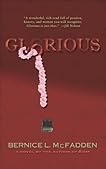It's easy for writers to become overwhelmed by the amount of promotional tactics out there. Even if we stay away from the
blimps and bribes, there are still so many things we can try. Which of them are efficient and effective... and still give us time to keep writing?
Today I'm hosting a guest post from author Maria Zannini, who suggests several ways to promote books, especially online, and does so from experience. Take it away, Maria.
******
by
Maria ZanniniPromo is scary stuff. I know. I used to be in advertising. We've been known to sleep with Marketing a time or two.
We of the advertising persuasion don't like to talk about that much.
It wasn't pretty.
When it comes to books, especially a debut book, you'll find yourself mired with options on how to promote it. There is no one right way. What I'm going to reveal is what worked for me, a writer on a budget and with limited time.
I want you to remember two things.
1. You don't have to do it all.
2. And you can promote your book on very little money.
The key to good promo is consistency and content. The more you can do on your own, the less expensive the experience.
I vote for less poor. And here's how I do it.
1. Start with a marketing plan.
2. Decide how much cash you can invest into marketing.
3. Build a marketing calendar around your venues.
4. Write the next book.
The Marketing PlanIf you check out
Killer Campaigns on my blog, you'll see 40 posts on promotional outlets that are either free or nearly free depending on your level of expertise. Pull out ten good ones that you think you can handle on your own.
For example, for my promo I chose a
web site,
blogging,
business cards,
reviews,
interviews,
linking,
email signature,
guest blogging,
podcasts, and
volunteering. These are the things I thought I could do well without donating a limb. (Limbs are hard to replace.)
Web site: The very first thing I built was the web site, and I did it myself, teaching myself Dreamweaver and creating something that looks professional and unique. As my husband likes to say, sometimes even a blind pig gets lucky. Sadly, you will have to wait another month to see it due to…ahem…me forgetting to renew my domain name. It'll be back though, bigger and better than before.
Blogging: The blog came second. I am comfortable blogging and I use that as my main platform for communication. Unlike many authors, I chose to immerse myself in only a couple of networking venues. I decided it was better to do a couple of things well than spread myself too thinly. Blogging fits my schedule (and my personality) perfectly.
Business cards: I'm a graphic designer by trade, so I have a leg up on most people. But here's a tip. Don’t get too fancy or include too much information. I used the cover of Touch Of Fire for one business card with nothing more than my web site, blog and email address. I want people to remember me. When they go into a bookstore, I want them to hand the seller my card and say, "I'm looking for this."
Reviews: Choose your review sites carefully. Read their past reviews as a guide to the quality of their reviewers.
Interviews: Same goes for interviews. You want to be known, and you are often judged by the company you keep. Choose sites with a strong following of people who love to read.
Linking: I love linking! Regardless whether you blog, send an email or post on a forum, link well and link often. It will raise your ranking on Google.
Email Sig: Passive advertising at its best. Never send an email without an added line listing your book, blog or web site.
Guest blogging: Every guest post should be unique. Never repeat yourself.
Podcasts: This was amazingly fun and not as painful as I thought it would be. It was also different from the normal online stuff.
Volunteer: Nothing gets you on the inside track faster or deeper than volunteering. Planning on going to a conference? Offer to help out for a few hours. You'll be amazed at how much that builds your network, and for doing nothing more than putting out chairs or manning a booth. Talk to people and exchange information. It's a goldmine.
BudgetNow that you know what you'd like to accomplish in a marketing year, decide how much it's going to cost you. Any of you who follow me know I am the Original Frugalista. I don't buy anything unless it pays me back in dividends.
From the list above, I can tell you I spent less than $75 USD the first year. $60 went toward the web site and $15 for business cards. I even got a bonus on the business cards. Somehow the post office crunched the corner of the box and they sent a note to the manufacturer informing them. The company, in turn sent me a brand new batch of cards plus a discount coupon for next time. To top it off, despite the crunching, the original business cards were perfectly fine. How cool is that?
Marketing CalendarHere is where you start to put everything together. You know what you want to accomplish and you know how much you're going to spend.
The next question is: When is your book coming out?
You'll get varying advice on when to start your promo, but here is the dirty nickel side. You have approximately ONE month to make the bulk of all the monies you'll earn on your book. E-book sales last a bit longer than print books, but the urgency is the same.
You must do the majority of your promo during the first month of the book's debut. If I knew then what I know now, I would have created a blitz and blogged, interviewed or networked in some way EVERY SINGLE DAY of the debut month.
It seems excessive, and it can be, but I can tell you an easy way to showcase yourself without becoming boring.
The answer is
content. The reason some authors come off as dull or annoying is because they are saying the same things everywhere they go. So don't do that. If you blog, come up with thirty different topics to talk about. Even if you don't use them all, have thirty posts ready to go. Guest blog widely. Keep your posts upbeat and entertaining, and finally, make sure it somehow relates to your book—without letting it be solely about the book.
Write The Next BookThis is where I tell you to do what I say, not what I do. LOL! Due to some unexpected eye surgeries, my writing was curtailed not long after Touch Of Fire debuted. Oy! You should have heard me sobbing. But sometimes Fate will do that to you. The trick is to get back in the saddle and ride that pony out.
I've given you all my hard-learned lessons in capsule form to keep this post from getting too long, but I'd be happy to answer any specific questions, so fire away.
What sort of promo interests you?
*******
Bio: Maria Zannini is the author of
Touch Of Fire, a post apocalyptic story set 1200 years in the future. Aside from writing paranormal romance, she homesteads on six acres of land in the middle of nowhere.
To the west of her roam lions, to the east, the llamas. Hopefully the lions prefer llama-on-the-hoof to gimpy-legged authors. Hmm…llama.
Visit me on
my blog.
Or
friend me on Goodreads. 











